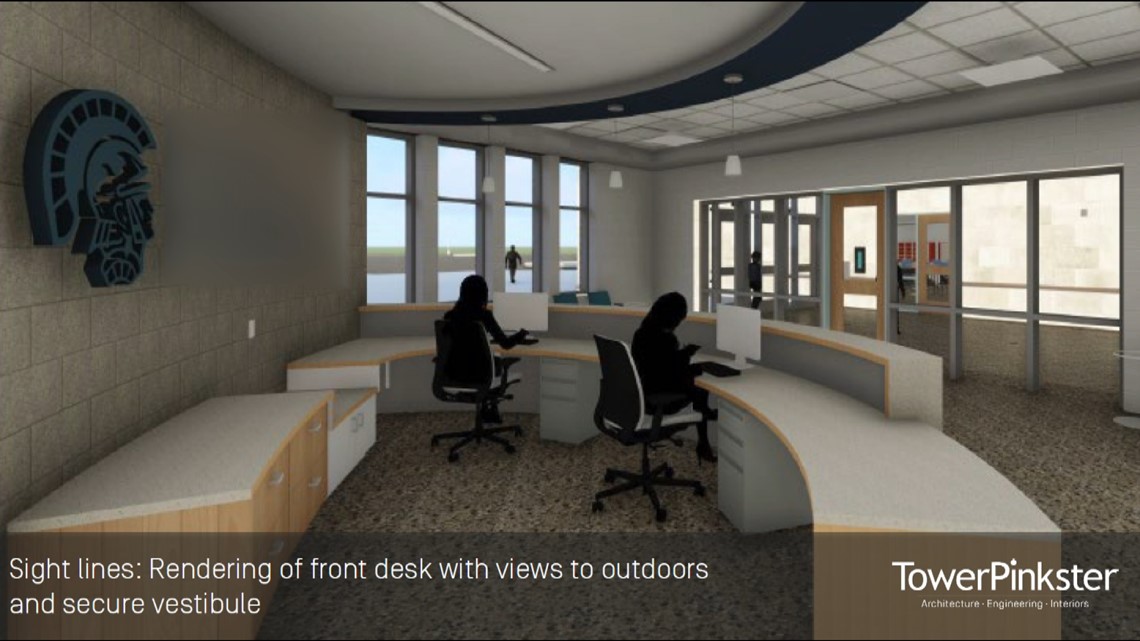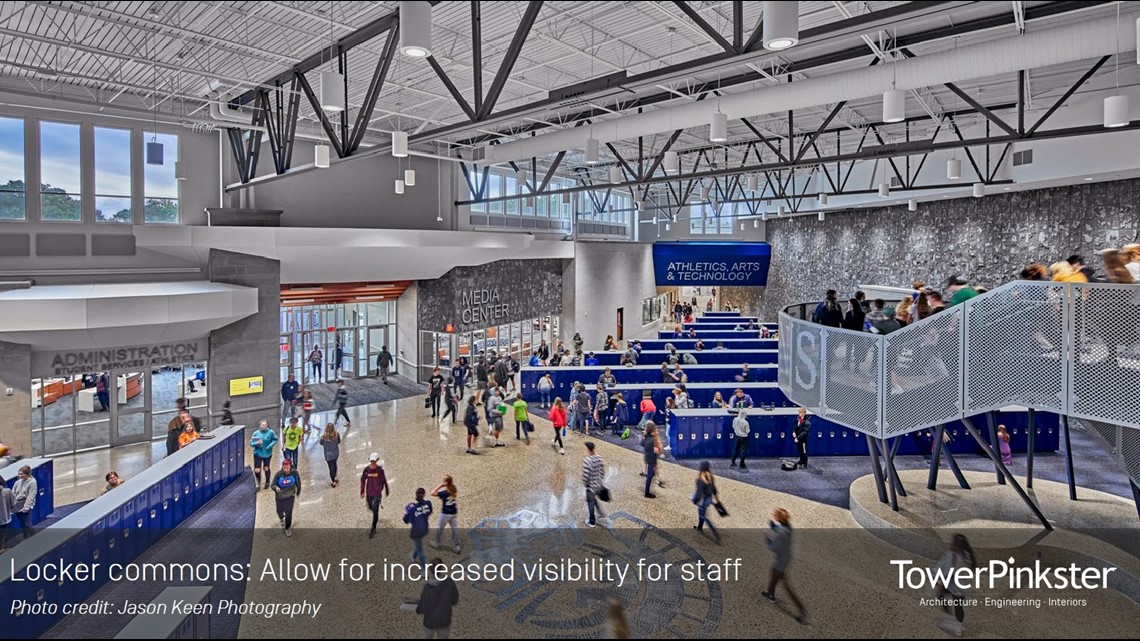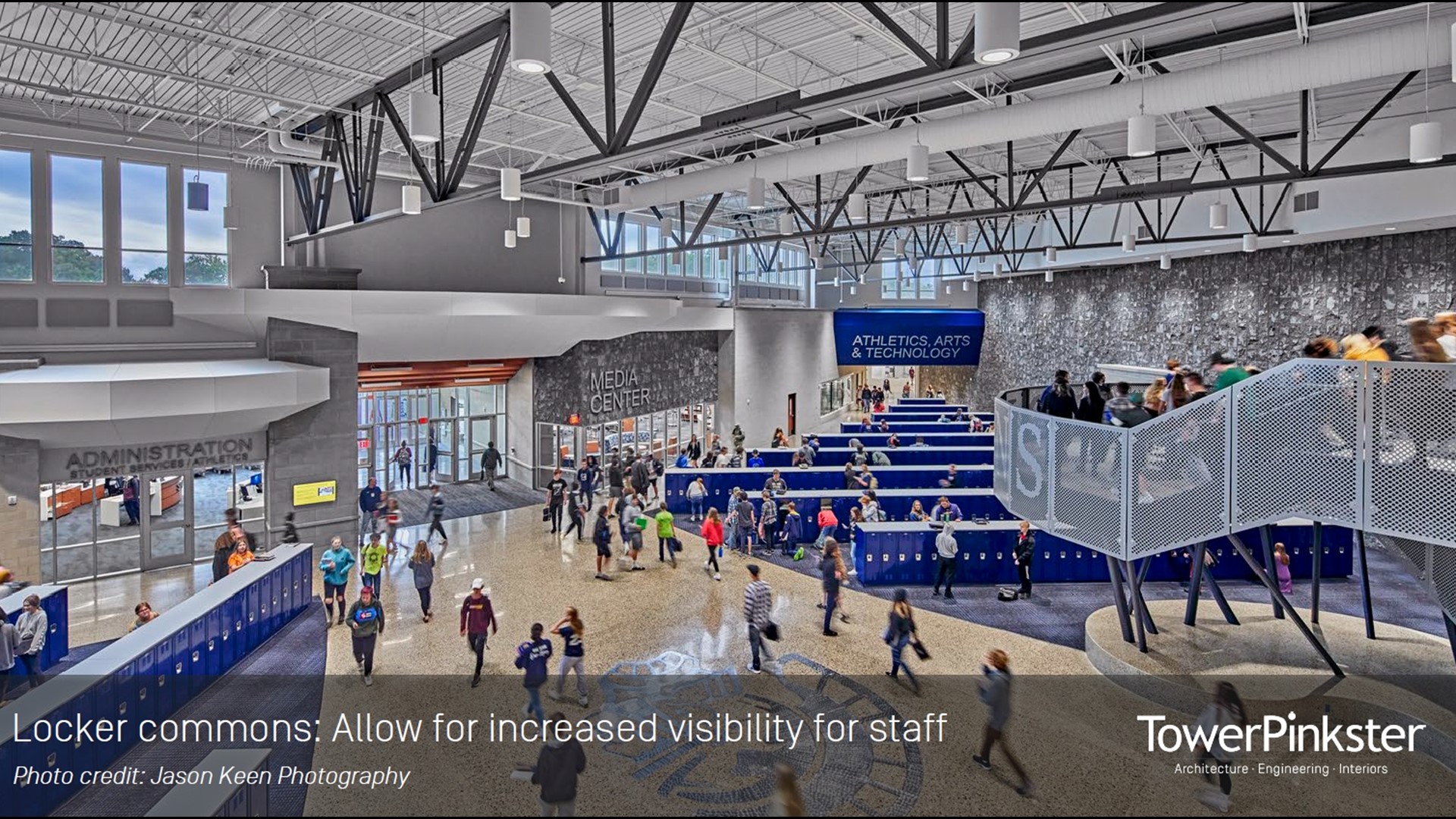GRAND RAPIDS, Mich — There have been hundreds of mass shootings in the country since the beginning of the year. Many of them have taken place inside schools. In light of this, there’s a conscious effort to make schools safer. Even architecture firms, like West Michigan-based TowerPinkster, have integrated these practices.
“We specialize in K through 12, higher education design, colleges and universities, healthcare, commercial and government,” Matt Slagle said. “So we basically do everything but single-family residential.”
Slagle is the director of K-12 education for TowerPinkster.
“We've worked with about 50 to 60 of the school districts in West Michigan, and we do about $500 million of K - 12 design a year,” he said.
When it comes to making a school safer, Slagle said it all starts at the main entrance.


“The first thing we like to talk about is passive supervision,” he said. “We use that person with the eyes at the front door, so it's typically the receptionists. We try to give them as much visual control, and that is something we can affect with architecture, because we can control the windows, we can control the walls.”
Other safety measures involve technology, like doors that are controlled with the use of a button or access card. Advanced cameras are also being installed.
“What they can do with cameras now and control systems, it's pretty amazing,” Slagle said. “A lot of these systems that they're putting in schools, the cameras have facial recognition, which helps with a threat, but it also helps with who plugged that toilet and walked out and tried to get away with it.”
Hallways and common areas within schools are also being redesigned, and law enforcement officials are weighing in.


“To bring the person who's going to respond to a threat into the design process is always a good way to do it,” Slagle said. “When we spoke to public safety, and we've done this on multiple different buildings, they said ‘okay, as we move through a threat, or we approach a threat, we want something that is not made of foam.’ They’ve got a couch or a chair or whatever to hide behind. So they approach things differently than we would in normal design. And that's really easy for us to do, because we can just kind of extend that wall.”
Renovations aren’t cheap. In many cases, the projects cost millions of dollars, and the construction can take years. But Slagle said it ends up being a worthwhile investment.
“If you think about these schools that have existed for 100 years, they have different additions,” he said. “The core is from the 30s, and then they've got the 50s, then they've got the 70s, and then they've got the 90s wing. That's that new gymnasium. And they've got the 2000s, that’s the science lab. And you go ‘okay, so what do we have to replace?’ We replace the core. So some of these will come in and over three to four years, create an outside corridor and demolish the middle of the building to then rebuild it, to then tie back in the pieces of infrastructure that are valuable. It's a difficult process, but it's worth it in the end.”
►Make it easy to keep up to date with more stories like this. Download the 13 ON YOUR SIDE app now.
Have a news tip? Email news@13onyourside.com, visit our Facebook page or Twitter. Subscribe to our YouTube channel.

